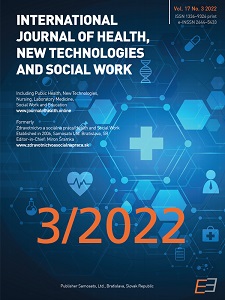Knee joint diagnostics using in depth sensory tests
Knee joint diagnostics using in depth sensory tests
Author(s): Jerzy Rottermund, Grzegorz Michalak, Lucia Ludvigh Cintulová, Magdalena Berska‑Maślej, Pavol BeňoSubject(s): Methodology and research technology, Health and medicine and law, ICT Information and Communications Technologies
Published by: SAMOSATO, s. r. o., Bratislava, Slovensko - MAUREA, s. r. o., Plzeň, Česká republika
Keywords: Knee joint diagnostics; deep sensory tests; physiotherapy;
Summary/Abstract: Introduction: The return to functional performance of the lower limbs in patients with degenerative diseases after orthopedic surgery and neurological and sports injuries is associated with the stimulation of prioprioceptive perception with neuromuscular control. The resumption of gait depends on a deep feeling, an alternative known as a proprioceptive feeling, and on the mechanisms that control the muscles. Sensory processed information in the nervous system forces an appropriate response of the muscular system through a system of feedback, controlled balance. An effectively functioning sensor integration system enables gait reeducation. Aim: The aim of the present article is to point out the necessity of performing deep sensory tests in the knee joint during diagnosis and physiotherapeutic activities in patients with lower limb dysfunction and after operations. Methods: A normal, passive lifestyle and limited motor activity reduce the possibility of receptor stimulation, leading to a gradual impairment of proprioceptive perception. Deterioration of deep sensation is observed in virtually all patients after prolonged immobilization, surgery and, for example, after neurological events. Results: Deep sensory impairment in the knee joints manifests itself in several ways. The most commonly observed gait is a departure from physiological gait, insufficient joint stabilization, muscle weakness or muscle stiffness. Patients often have difficulty locating the limb. The paper presents selected tests of deep sensation, taking into account the ability to reproduce the position of the knee joint as well as a test of the strength and speed of the performed movement. In the diagnosis of proprioception and the evaluation of progress in the physiotherapeutic improvement of the lower limbs, it has been proposed to use a treadmill and a stabilometric platform. Assessment of proprioceptive sensation is essential in the rehabilitation of patients with lower limb dysfunction and, in combination with other diagnostic tests, will allow physiotherapy to focus on what is most and most important in terms of the patient’s needs. When deep sensation worsens, you should immediately begin the recommended exercise and daily activities, taking into account the patient’s contraindications and current motor skills. Conclusion: Numerous lower limb dysfunctions, injuries and the need for surgical procedures in society require the use of reliable and reliable tests during comprehensive rehabilitation. The proprioception tests presented in the article are not only an element of diagnostics, but also an objective assessment of ongoing improvement.
Journal: International Journal of Health, New Technologies and Social Work
- Issue Year: 17/2022
- Issue No: 3
- Page Range: 81-87
- Page Count: 7
- Language: English

